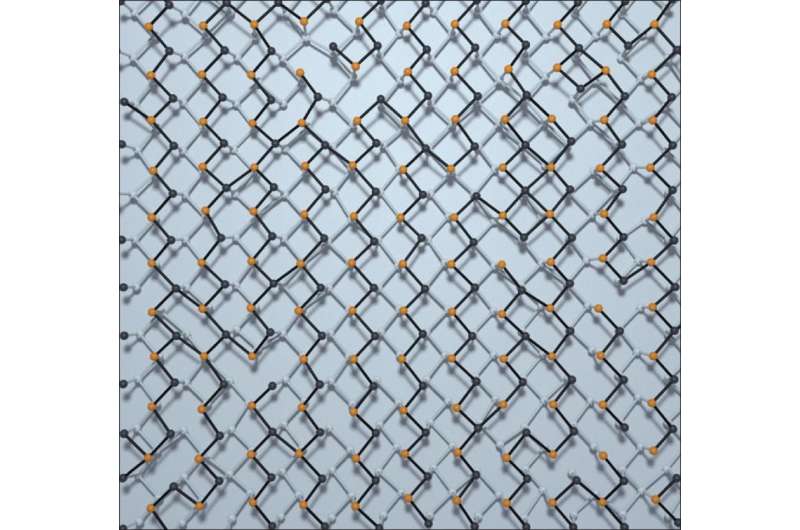Study shows temperature can dramatically affect behavior of 2-D materials

New research at the University of Arkansas shows that temperature can be used to dramatically alter the behavior of two-dimensional materials that are being investigated as candidates to power the next generation of electronic devices.
The research revealed black phosphorous and monochalcogenide monolayers act differently than any other known 2-D materials at any given temperature because there are four ways to create their atomistic arrangement, and these four arrangements compete and lead to disorder, said Salvador Barraza-Lopez, an assistant professor of physics at the University of Arkansas.
"Remarkably, nobody had found that some of these two-dimensional materials become disordered at a room temperature and well before they melt," Barraza-Lopez said. "At the transition temperature the unit cell transforms from a rectangle onto a square and all material properties change."
An international research team led by Barraza-Lopez and Pradeep Kumar, assistant professor of physics at the U of A, published its findings in Nano Letters, a journal of the American Chemical Society.
The black phosphorous and monochalcogenide monolayers become disordered at a finite temperature, Barraza-Lopez said.
"At that moment, the structure transforms from a rectangle to a square and its behavior also changes," he said.
Having access to the Trestles supercomputer at the Arkansas High Performance Computing Center was crucial to the study, Barraza-Lopez said.
Barraza-Lopez and Mehrshad Mehboudi ran multiple calculations on Trestles for about three weeks each and without interruption. Mehboudi is a doctoral student in the university's interdisciplinary microelectronics-photonics graduate program.
"There is no way we could have achieved these results in the timeframe we did without Trestles," Barraza-Lopez said.
More information: Mehrshad Mehboudi et al. Two-Dimensional Disorder in Black Phosphorus and Monochalcogenide Monolayers, Nano Letters (2016). DOI: 10.1021/acs.nanolett.5b04613
Journal information: Nano Letters
Provided by University of Arkansas





















